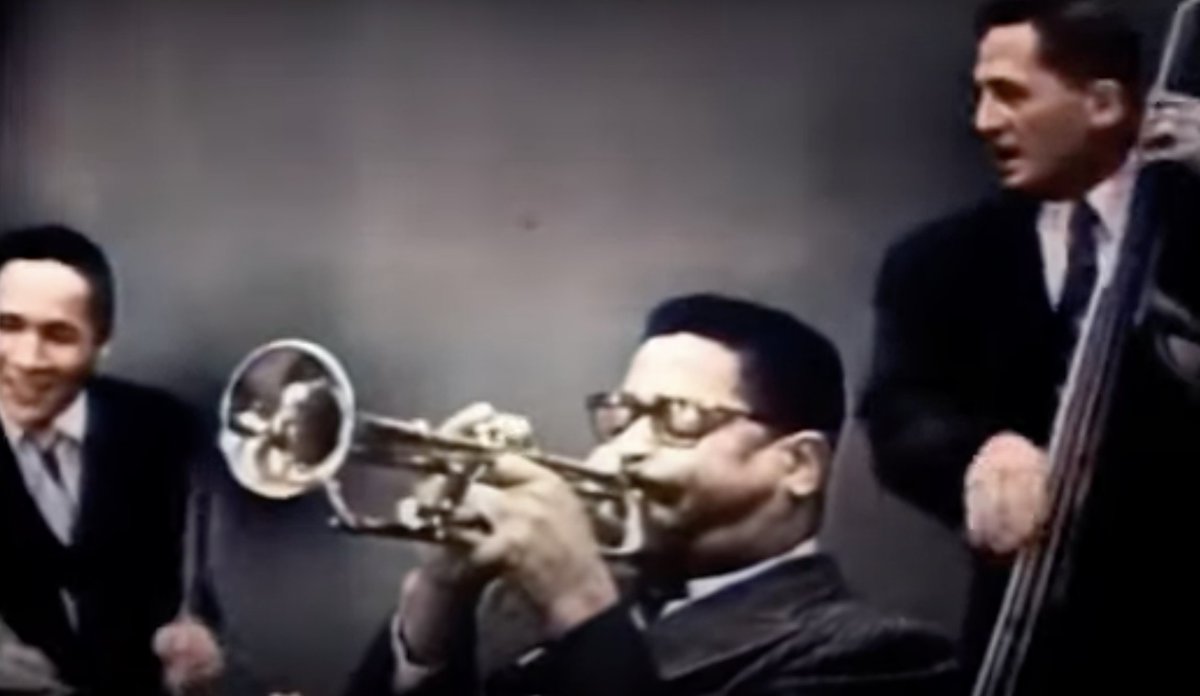Pristine Atmospheres: the Music of Dizzy Gillespie

Dizzy Gillespie
I like the idea of allowing music to flow, and disallowing a holding back feeling of being self-conscious. Pandit Jasraj told me that everyone has their own individual gait, or manner of walking, and expects students to develop a similar concept within the realm of music. Lately, I’ve been experiencing a not so subtle shift in my appreciation for my favorite jazz trumpeter, Dizzy Gillespie. Previously, I felt that Charlie Parker was way beyond him, but now I’ve been especially enjoying the percussive-like articulation Dizzy employs at times, contrasted with his extremely legato phrases. Also, sometimes the darkness of Bird’s personal anguish overwhelms me, with the perhaps more joyful utterances of Gillespie emerging as a most welcome balm. And the potentialities of dramatic contrasts between muted and open trumpet are utilized to the hilt with Dizzy. For example, listen to his thrilling solo on his own fantastic composition, "BeBop," from the legendary For Musicians Only date. Dizzy enters after Sonny Stitt’s alto solo using a mute, and after Stan Getz solos on tenor, Dizzy reemerges even more dynamically than before with the open horn. There is no limit to the rainbow of subtle tone colors Gillespie paints by contrasting Shiva and Shakti-like opposites stemming from putting on and taking off the mute. Scientist and mystic, philosopher and joker, and truly a musician of the mountains who could walk on the clouds was Dizzy Gillespie. Words cannot begin to describe the flowing rivers of his immaculate output. Infinitesimal particles dancing within an atom releasing unlimited potential energy is one way to think of his improvisations. - Michael Robinson, February 2015, Los Angeles
© 2015 Michael Robinson All rights reserved
Michael Robinson is a Los Angeles-based composer and musicologist. His 162 albums include 149 albums for meruvina and 13 albums of piano improvisations. He has been a lecturer at UCLA, Bard College and California State University.
|